Table of Contents
It was dubbed the World’s Longest Museum.
Hiking the Chilkoot trails is a blast to past. The section from Dyea to Lindeman Lake was dubbed the “world’s longest museum.” Read on to learn the who, what, where, why, and how along this historic route spanning across Alaska, BC, and the Yukon.
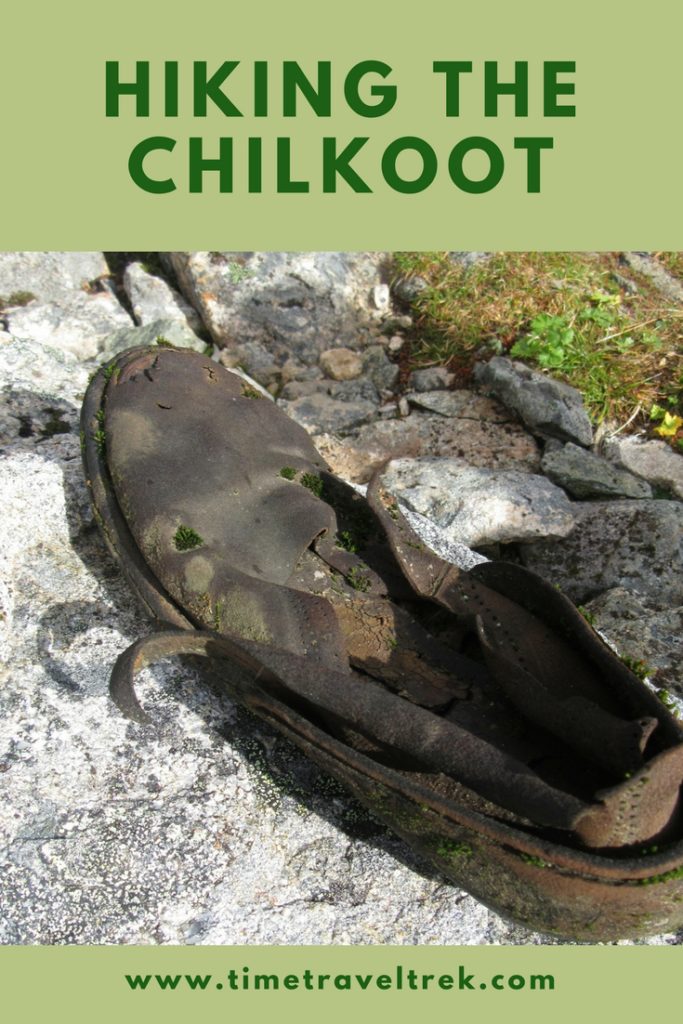
Disclosure: This post contains affiliate links. If you buy something from one of our affiliates, we receive a small commission at no extra charge to you. Thanks for helping to keep our blog up and running!
Historic Hiking: The Chilkoot Trail
Overloaded and frantic to reach the goldfields near Dawson City in the Yukon, Canada, the stampeders of 1897-98 abandoned much of their gear hiking the Chilkoot Trail – especially during the first 41 km (26 mi) of the trail from Dyea, Alaska to Lindeman Lake, British Columbia.
Time and nature have had a lot of time to remove all traces of this crazy rush. Will there be much left to discover as we wander along the stampeders trail close to 120 years later?
They Called Them Cheechakos
Many of goldseekers taking the Chilkoot Trail from Dyea to Lindeman Lake and beyond were ill-prepared. They struggled get themselves and their gear up the trail, over Chllkoot Pass and down to Lindeman Lake where they could build a boat to go a little further. Old-timers called them Cheechakos. Cheechako is a Tlingit word for greenhorn.
Each stampeder was required to haul one ton of goods up to the scales at Chilkoot Pass. It took the average stampeder three to four weeks to pack his goods from the water’s edge at Dyea to shores of Lake Lindeman.
Interpretive signs warn that “your load may be lighter, but you face some of the same hazards. Weather can be extreme, especially on Chilkoot Pass. Start this hike only if prepared for severe conditions.”
Luckily, we’ve done this outdoor camping and adventure thing once or twice before – nobody’s calling us Cheechakos or greenhorns while hiking the Chilkoot Trail.
First camp for the Stampeders: Finnegan’s Point
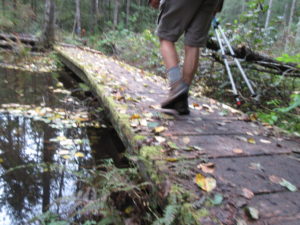
In 1897, Pat Finnegan and his two sons established a ferry service. They later built a corduroy road – a road made of tree trunks laid down side by side – through the boggy areas approaching the Point and operated it as a toll road.
In the summer, this point eight kilometres (5 miles) from Dyea was the northern terminus of the wagon road. In the winter, stampeders could pull their sleds up the frozen riverbed. Finnegan’s Point was a convenient place to cache their gear and go back for another load. Our loads were lighter and we weren’t ready to stop for the night. We continued down the muddy trail to Canyon City.
Canyon City
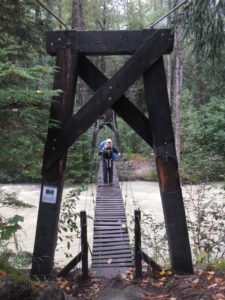
Hundreds of tents crowded this ravine in 1897. It was the first major stop for most stampeders. Canyon City was a good place to cache goods before the steep climb out of the canyon. By spring 1898, two freight companies were building power houses for aerial tramways and stripping hillside to fuel boilers and build log houses.
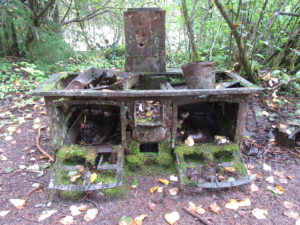
Within a year Canyon City would vanish. Before heading on to Sheep Camp, we took the spur trail across the swinging bridge to see signs remaining from the site of all the 1897 action. Rusted chunks of metal, pieces of glass bottles, decaying cabin logs and the rusting hulk of a boiler were found.
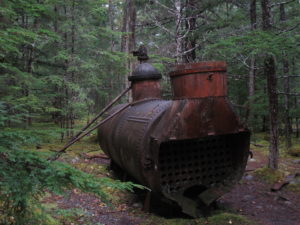
This tramway – which only ran during the last few months of the gold rush – was powered by the 50-horsepower steam boiler that was too heavy to take out when Canyon City died out. If you could afford the 7 ½ cents per pound freight charge, you could send your supplies over Chilkoot Pass via a tram. Most stampeders had to carry their loads from cache to cache.
Tripping Along From Pleasant Camp to Sheep Camp
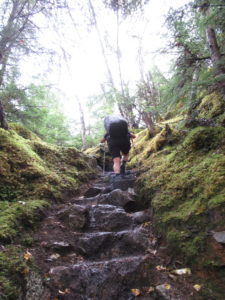
The trail from Canyon City to Pleasant Camp was described by one stampeder as “the worst piece of trail on the route, fairly muddy, with many boulders and with some short, steep ascents and descents in and out of small gulches.” For us, hiking the Chilkoot Trail along this section was a little less muddy than the first day’s slog, but it did climb!
From Pleasant to Sheep – it was a transition from rock to muddy puddles for our crew.
Sheep Camp to the Scales to the Pass
The tramways that carried the wealthier stampeders’ supplies from Canyon City to Crater Lake paralleled the stream of men who had to shuttle loads on their backs. The brush has long since grown back around Sheep Camp, probably hiding a wealth of discarded supplies, but the occasional piece of rusted metal can still be seen. Tumbled piles of wood – the remains of the tram towers – can still be spotted on the hillsides.
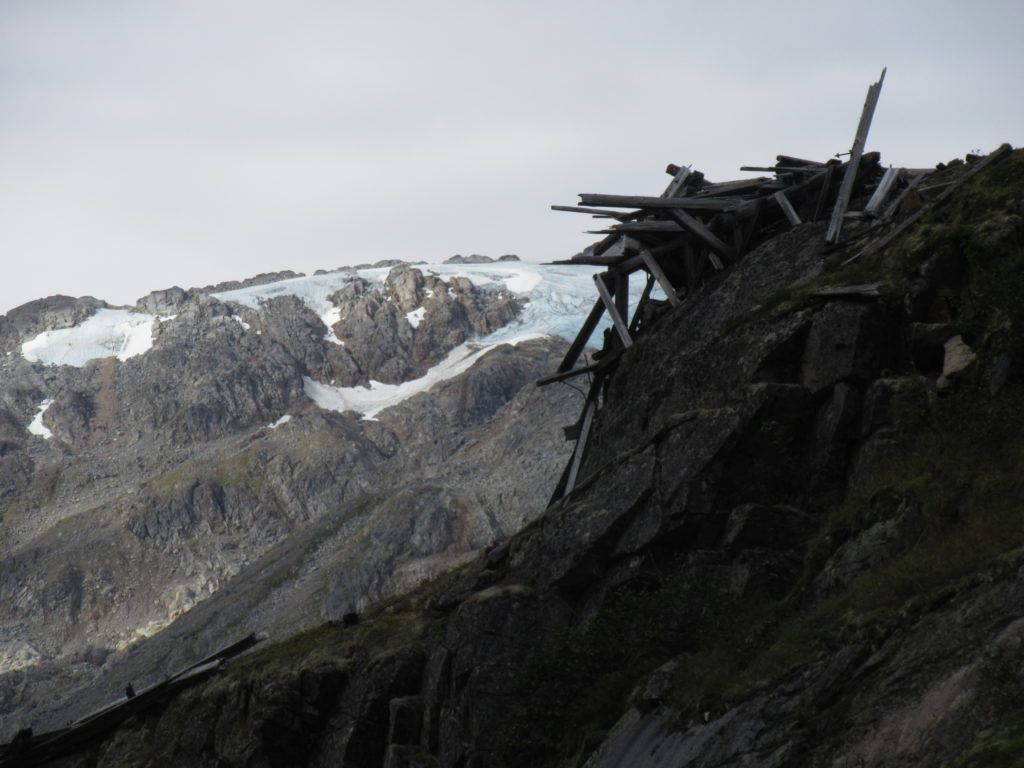
A distinct change comes about at the scales near the foot of the climb up to Chilkoot Pass. It was here that stampeders re-weighed their goods. Professional packers could be hired to carry loads up to the pass, but they would sometimes charge up to a dollar a pound. Every ounce made a difference. As a result, the area became littered with excess gear.
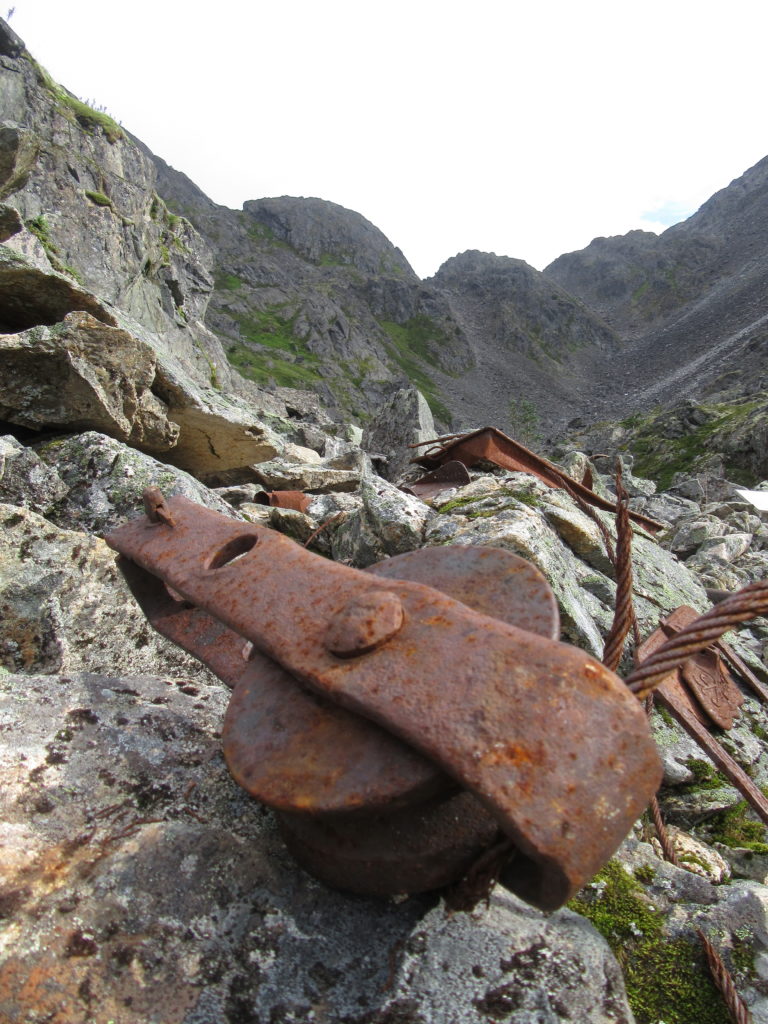
It took upwards of twenty, 50-pound trips to carry the required ton of goods to the top of the pass. Climb up, unload, slide back down, reload, and wait. At times it took up to half an hour to break into the human chain of stampeders inching their way up the slope. With our single loads, most weighing under 50 pounds, it seemed relatively easy to pick our way through the boulder field to the summit.
After the pass and the final tram station above Crater Lake, the flotsam and jetsam of the goldrush era dwindles. The downhill leg of the journey on the Canadian side of the pass was little less punishing that the climb up.
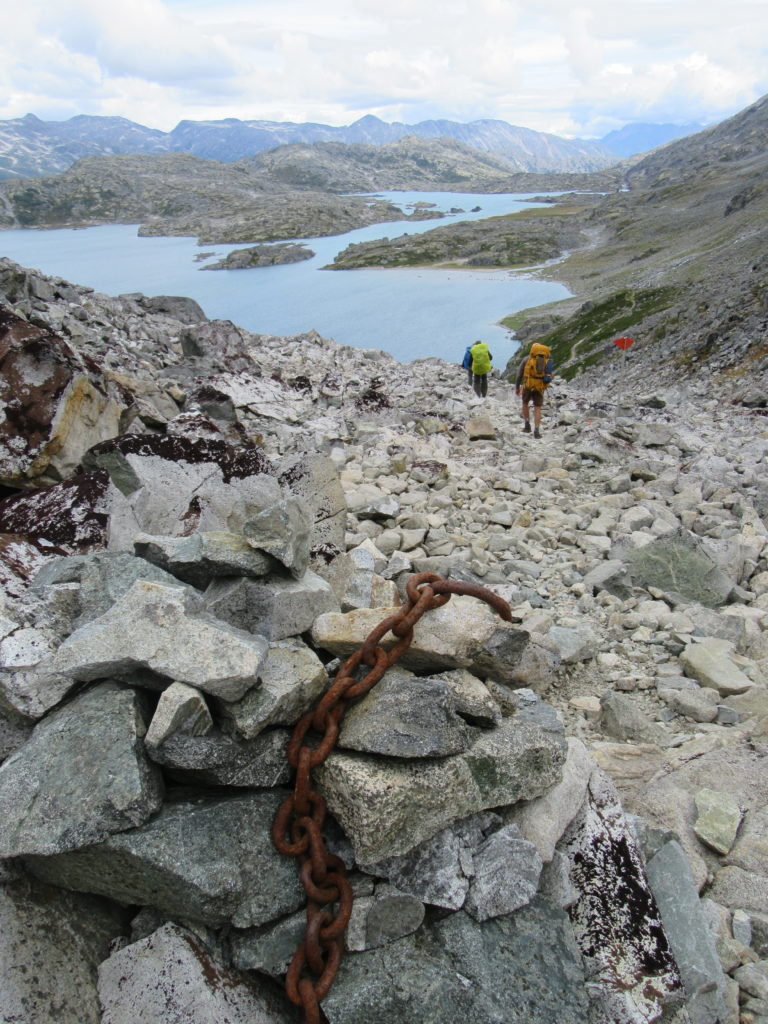
Before You Go Hiking the Chilkoot Trail:
Read a little more about the trail description from the Parks Canada Chilkoot Trail National Historic Site.




Leave a Reply